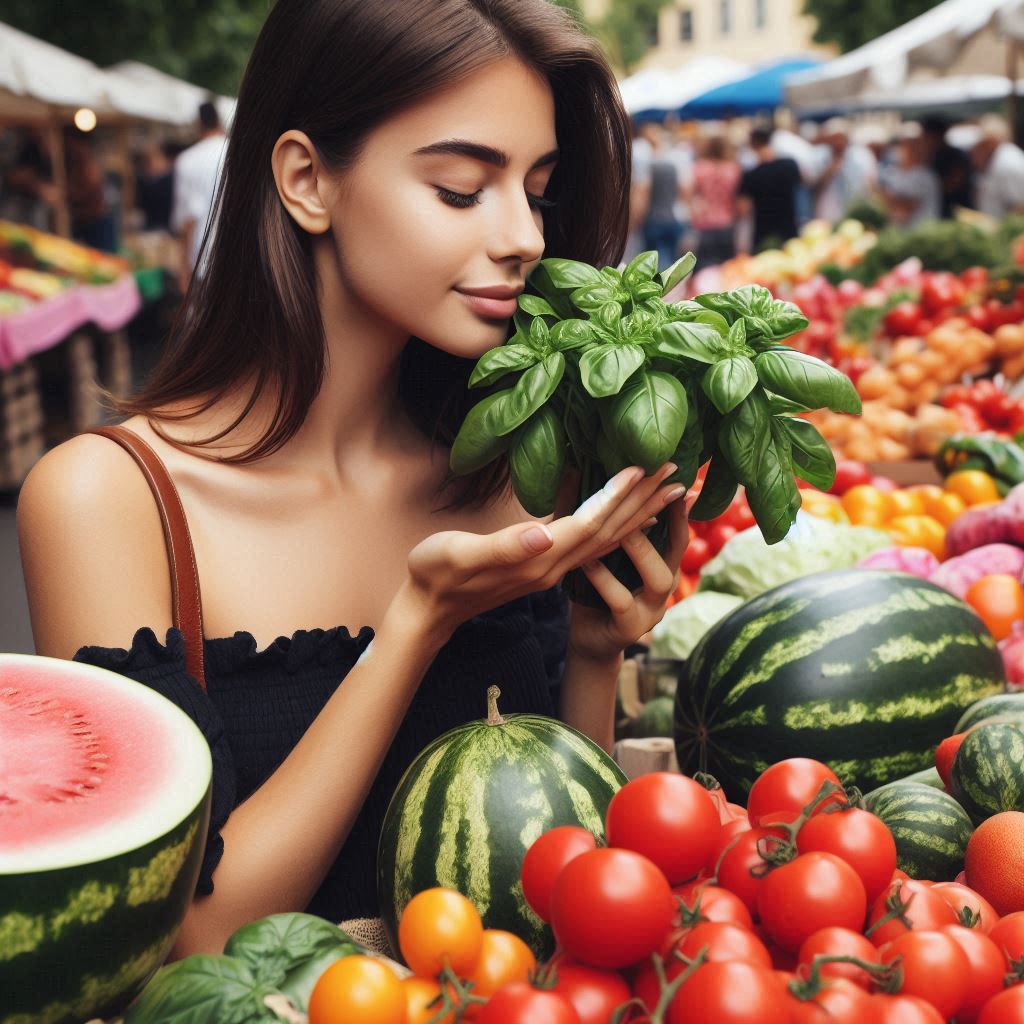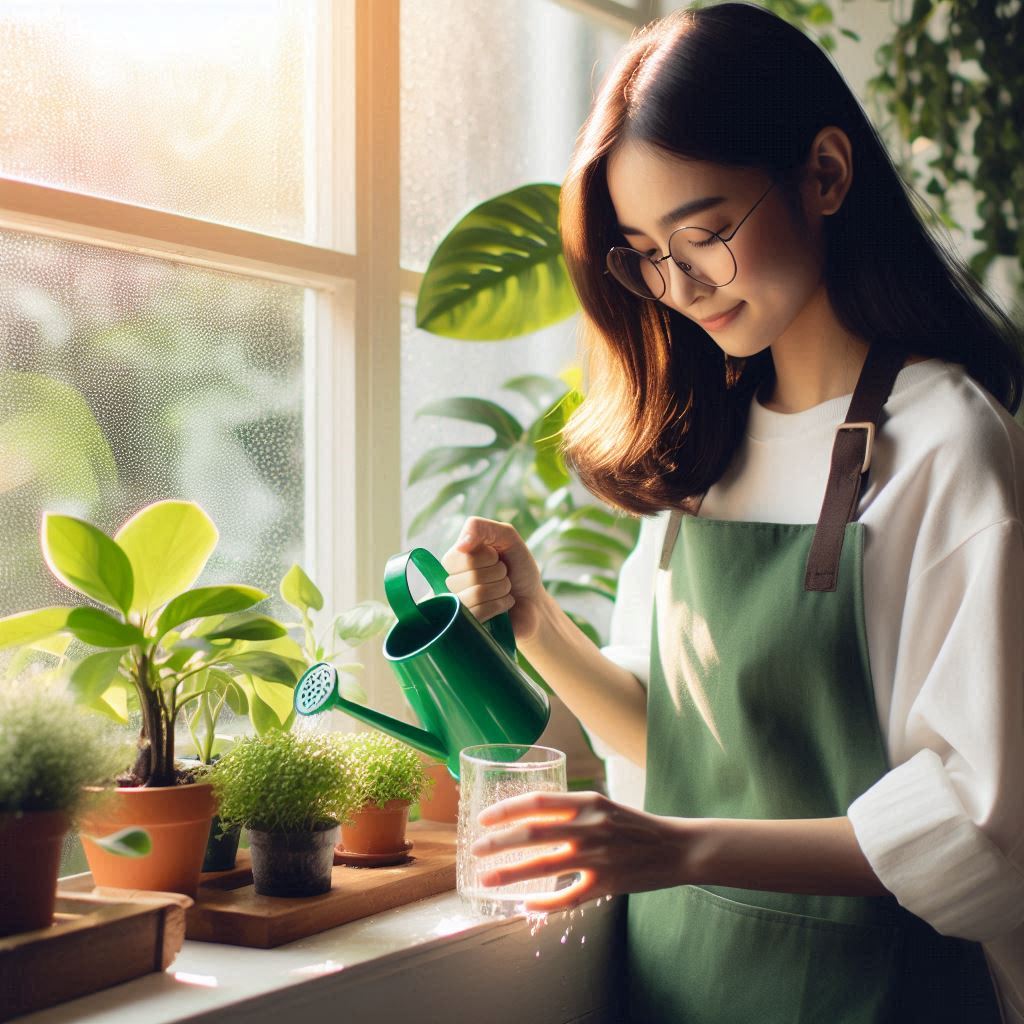Choosing fresh vegetables is an art that involves engaging all your senses—sight, touch, smell, and sometimes even sound. This guide will delve deeply into how each sense can be used to ensure you pick the freshest, highest-quality produce. Whether you’re shopping at a local farmers’ market or a grocery store, these tips will help you make the best selections.
Sight: The First Impression
Sight is usually the first sense we use when selecting vegetables. It provides crucial information about the quality and freshness of produce.
- Color: The color of a vegetable is a primary indicator of its freshness and nutritional content.
- Tomatoes: Look for a deep, uniform red. Green patches may indicate under-ripeness, while very dark spots can signify overripeness.
- Carrots: A bright, vivid orange color is ideal. Pale carrots can be less flavorful.
- Leafy Greens: Vibrant green leaves are a must. Yellowing or browning edges can indicate age or poor storage.
- Bell Peppers: Choose peppers with a glossy, bright skin, be it red, yellow, or green. Dull colors often indicate that the pepper is past its prime.
- Shape and Size: While some vegetables can come in various shapes and sizes, uniformity can be a sign of careful cultivation.
- Cucumbers and Zucchinis: These should be relatively straight and evenly shaped, not too skinny or bulbous.
- Potatoes: Look for those that are round or oval without deep indentations or irregular lumps, which can make peeling difficult and may hide decay.
- Surface: Inspect the skin or surface of the vegetable closely.
- Eggplants: Should have a shiny, smooth surface without any blemishes or wrinkles.
- Tomatoes and Peppers: A firm, smooth skin is ideal. Avoid any with cuts, bruises, or soft spots, which can quickly lead to spoilage.
Touch: The Physical Assessment
Touch provides information that sight cannot. It helps confirm the visual cues and provides additional details about the vegetable’s quality.
- Firmness: Fresh vegetables should be firm to the touch.
- Bell Peppers and Cucumbers: Should feel solid, not yielding easily to gentle pressure. Soft spots indicate they are beginning to spoil.
- Root Vegetables: Carrots, beets, and potatoes should be hard. Any softness suggests they may be old or have internal damage.
- Weight: Heavier vegetables often indicate better quality and higher water content.
- Tomatoes: When comparing two similarly sized tomatoes, choose the one that feels heavier, as it is likely juicier.
- Cucumbers: A heavy cucumber is usually full of water and nutrients.
- Texture: The texture can tell you a lot about the freshness.
- Leafy Greens: Should be crisp to the touch. Wilted, limp leaves are a sign of old age or poor storage conditions.
- Potatoes and Carrots: Should be smooth and hard, not wrinkled or shriveled, which indicates dehydration and loss of quality.
Smell: The Scent of Freshness
Smell is a powerful tool in detecting the freshness and quality of vegetables. It can sometimes give away spoilage even when other senses do not.
- Aroma: Fresh vegetables usually have a pleasant, earthy smell.
- Tomatoes: Should emit a sweet, fragrant aroma, especially around the stem area. A sour or fermented smell is a clear indicator of spoilage.
- Herbs: Fresh herbs like basil, cilantro, and parsley should have a strong, fresh aroma. Lack of smell can indicate they are past their prime.
- Intensity: Some vegetables have a distinctive, strong scent when they are fresh.
- Leafy Greens: Should smell fresh and clean. Any musty or off-putting odors can indicate decay.
- Onions and Garlic: Fresh onions and garlic should have a strong, pungent aroma. A mild or off smell may suggest they are losing their potency or beginning to spoil.
Sound: The Audible Clues
While sound might not be the first sense you think of when selecting vegetables, it can provide important information about their freshness.
- Crispness: Some vegetables should produce a crisp sound when broken or snapped.
- Bell Peppers and Cucumbers: When snapped, they should produce a satisfying crunch, indicating their freshness and high water content.
- Green Beans: Should snap easily with a crisp sound, not bend without breaking.
- Hollow Sound: For some vegetables, like melons and squashes, tapping them can provide clues to their ripeness.
- Watermelons: When you tap a watermelon, it should produce a deep, hollow sound, indicating it is ripe and juicy.
- Winter Squashes: A hollow sound when tapped suggests they are ready to be used.
Special Tips for Specific Vegetables
Different vegetables have specific indicators of freshness. Here are some additional tips for a few common types:
- Leafy Greens:
- Lettuce and Spinach: Look for leaves that are vibrant and crisp. Avoid any that are wilted or have yellowing edges. These should be stored in the refrigerator and consumed within a few days for maximum freshness.
- Kale and Collard Greens: Choose leaves that are firm and dark green. Limp leaves indicate they are past their prime.
- Root Vegetables:
- Carrots: Should be firm and bright orange. Avoid any with green tops or that are limp. Store them in a cool, dark place to maintain freshness.
- Beets: Look for smooth, firm beets with deep color. Any softness or wrinkling can indicate they are old.
- Potatoes: Choose those that are firm and free from sprouts or green patches. Sprouts indicate age, and green patches can be toxic.
- Tomatoes:
- Look for tomatoes that are plump and have a slight give when gently pressed. Overly hard tomatoes are under-ripe, while very soft ones may be overripe.
- Heirloom varieties often have unique shapes and colors, but they should still be free from large blemishes or cracks.
- Onions and Garlic:
- Should be firm with dry, papery skins. Avoid any with green shoots or soft spots, which indicate they are beginning to spoil.
- Store in a cool, dark, and dry place to extend their shelf life.
- Peppers:
- Choose peppers with a glossy, firm skin and no wrinkles. The stems should be green and fresh-looking.
- Bell peppers should feel heavy for their size, indicating they are full of moisture and nutrients.
General Advice
- Seasonality: Choosing vegetables that are in season is one of the best ways to ensure freshness and flavor. Seasonal vegetables are typically grown locally, reducing the time they spend in transit and ensuring they are picked at their peak ripeness.
- Spring: Asparagus, peas, radishes, and leafy greens.
- Summer: Tomatoes, cucumbers, zucchini, and bell peppers.
- Fall: Squash, pumpkins, sweet potatoes, and carrots.
- Winter: Root vegetables like potatoes, onions, and beets, as well as hardy greens like kale.
- Local Produce: Whenever possible, buy locally grown vegetables. They spend less time in transit, which means they are fresher when they reach your table.
- Local farmers’ markets are a great place to find fresh, seasonal produce. Farmers often pick their vegetables the day before the market, ensuring maximum freshness.
- Community-supported agriculture (CSA) programs can also provide you with a regular supply of fresh, local vegetables.
- Organic vs. Conventional: Organic vegetables are grown without synthetic pesticides and fertilizers. While they can be a healthier choice, freshness can be gauged similarly to conventional vegetables.
- Organic produce might not always look as perfect as conventionally grown vegetables due to the lack of chemical treatments, but they often offer superior flavor and nutritional benefits.
- Washing all vegetables thoroughly, whether organic or conventional, is essential to remove any residues or dirt.
Storage Tips
Proper storage is crucial to maintaining the freshness of vegetables after you bring them home.
- Refrigeration: Most vegetables should be stored in the refrigerator to keep them fresh longer.
- Leafy Greens: Wrap in a damp paper towel and store in a plastic bag or container to keep them crisp.
- Root Vegetables: Store in the crisper drawer to maintain their firmness.
- Tomatoes: Store at room temperature until they are fully ripe, then refrigerate to extend their shelf life.
- Room Temperature: Some vegetables are best stored at room temperature.
- Onions and Garlic: Keep in a cool, dark place with good air circulation.
- Potatoes: Store in a cool, dark place, but not in the refrigerator, as cold temperatures can turn their starches into sugars, altering their taste and texture.
- Moisture Control: Keep vegetables dry to prevent mold and rot.
- Mushrooms: Store in a paper bag in the refrigerator to absorb excess moisture.
- Herbs: Stand in a glass of water like a bouquet and cover with a plastic bag. Change the water daily.
Conclusion
By engaging all your senses, you can become adept at selecting the freshest, most flavorful vegetables available. This skill not only enhances the quality of your meals but also ensures that you are consuming the most nutritious produce possible. Whether you’re a seasoned chef or a home cook, these tips will help you make the best choices in the produce aisle. Happy vegetable shopping!


